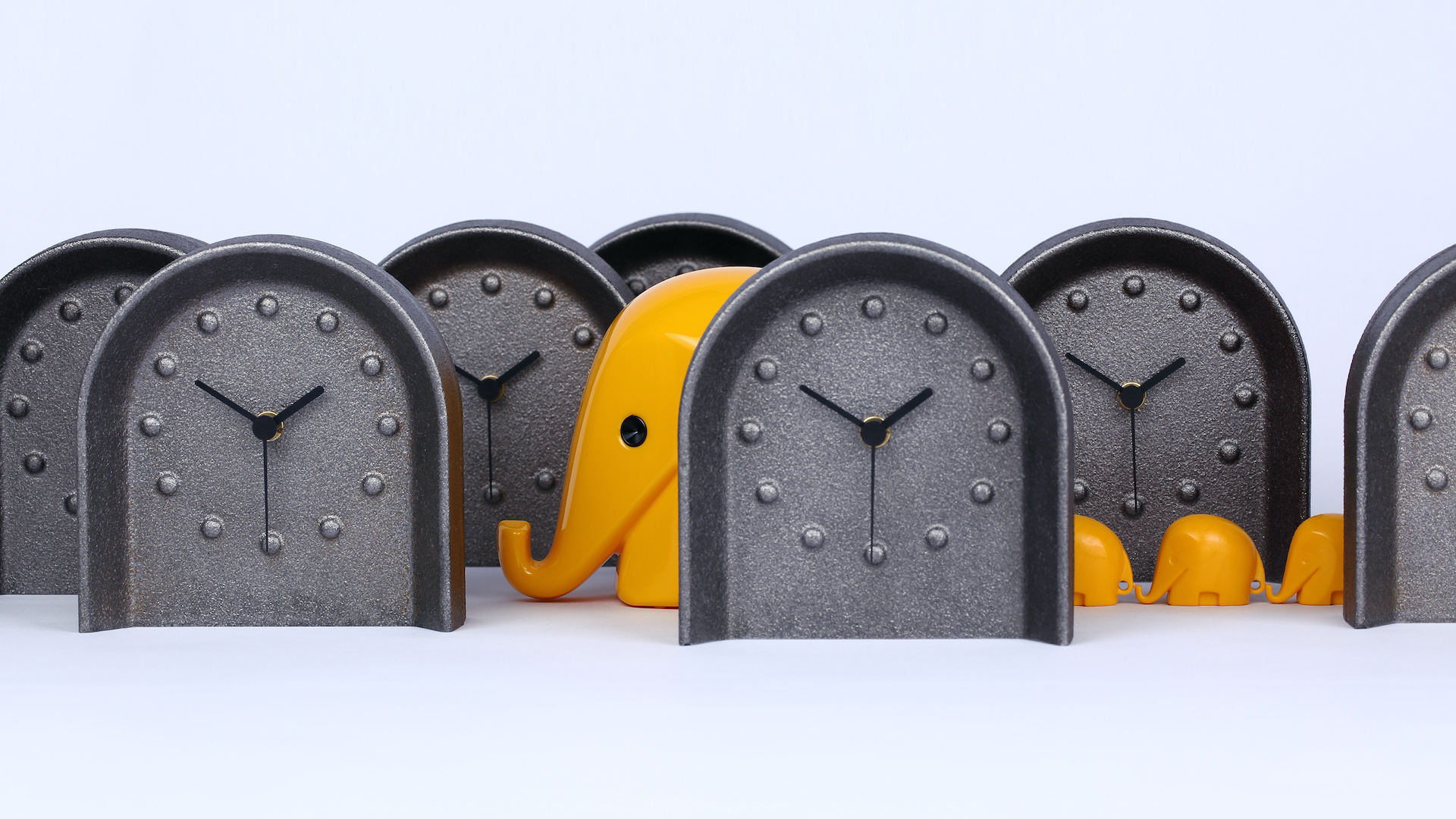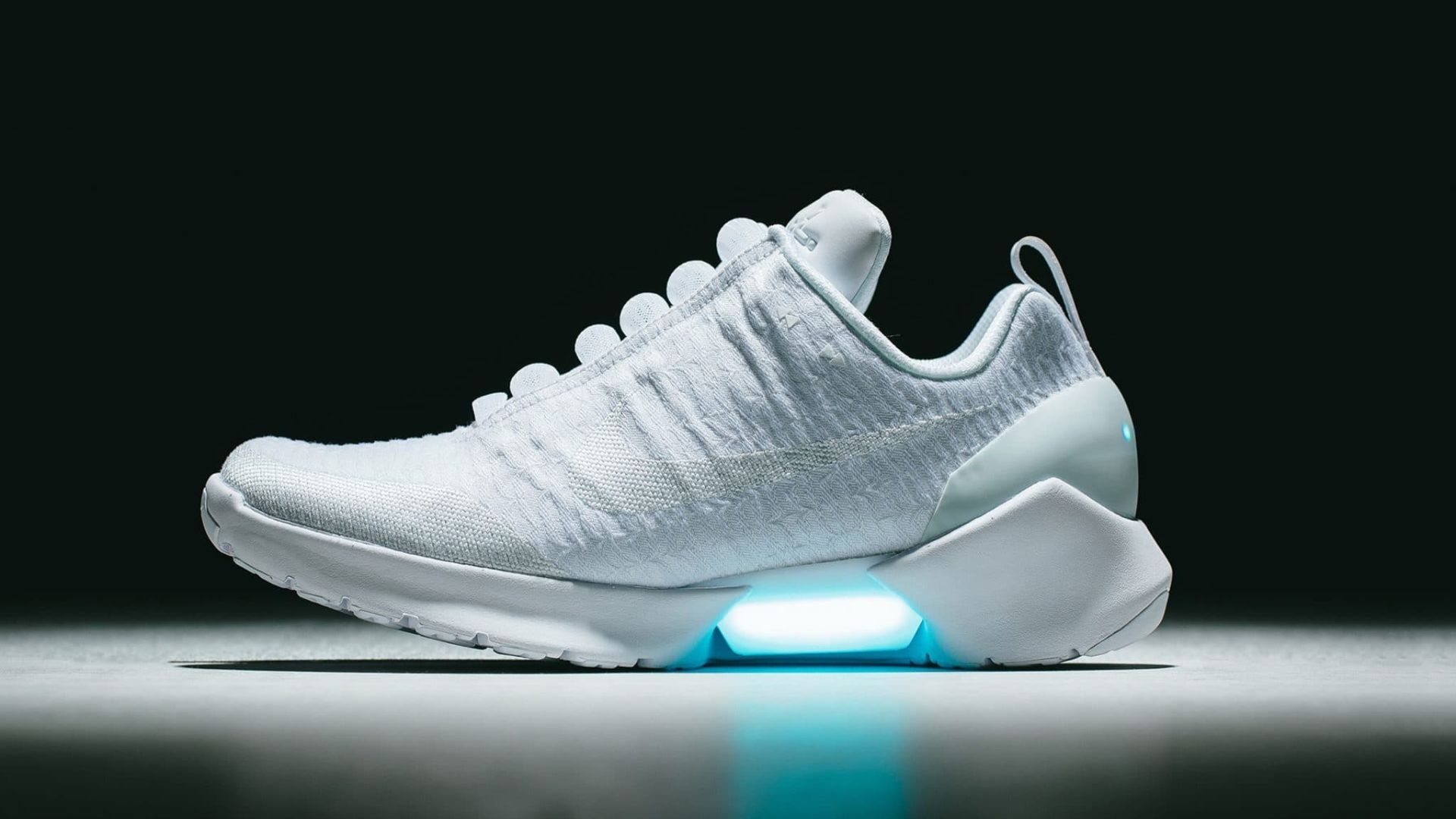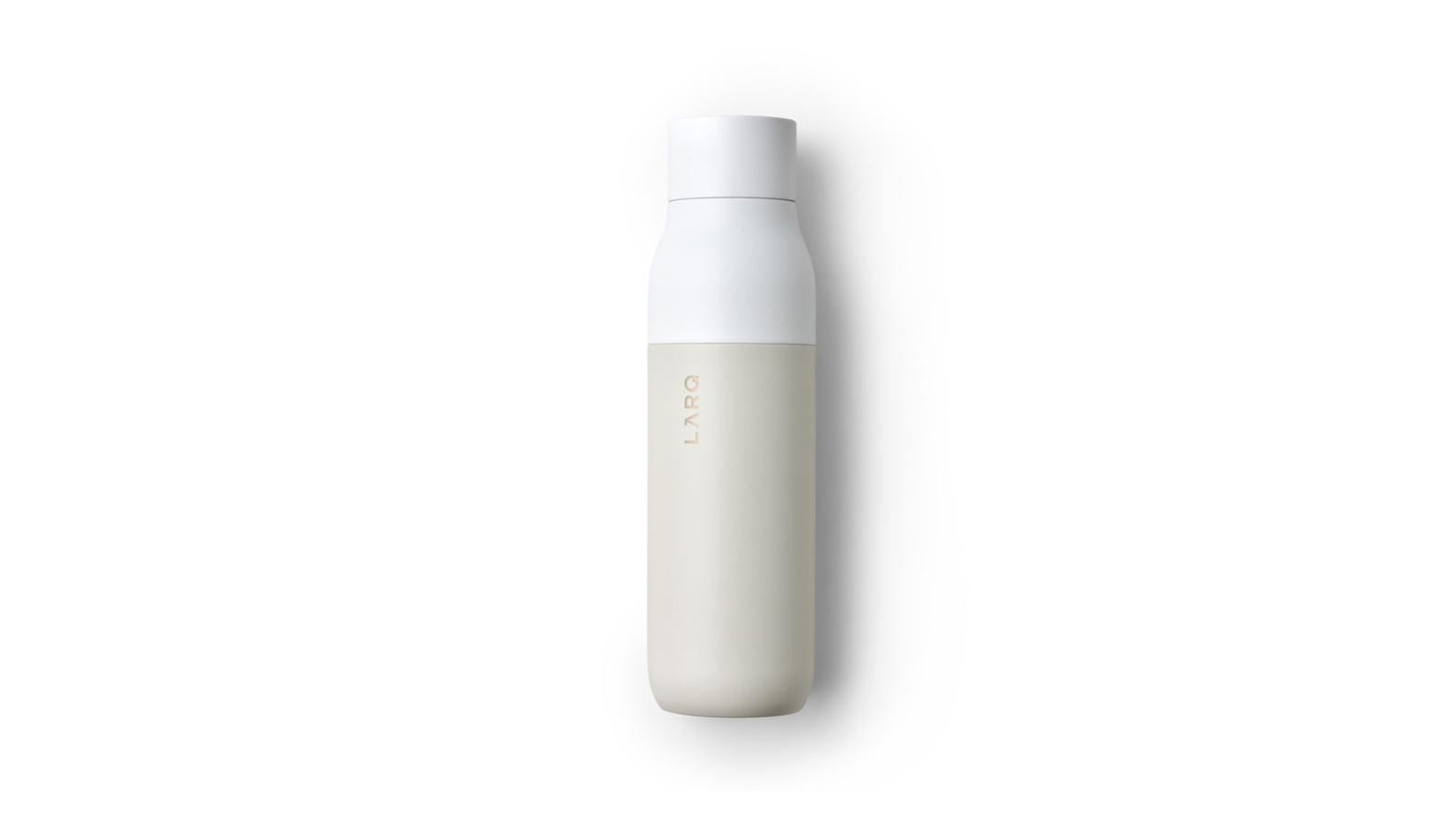All about simplicity and creating a special link between people & objects – Marc Venot interview
Conscious about product design impact in the world, Marc Venot creates objects that will last for years inspired in simplicity and utility.

With an innate curiosity on how objects are made, Marc Venot became an industrial designer with the aim to create something magical, a special link between people and objects.
Having worked for companies such as Normann Copenhagen, Thonet, Ligne Roset, Mastrad and Lexon, Marc’s approach to design remains simple, functional and versatile.
Never limiting himself to one style or material, he understands the needs of each project and puts people first when ideating any object.
DesignWanted had the opportunity to talk to Marc about his opinion on design, his renowned Elephant chair and what the future holds for the industry of design.

Who is Marc Venot? How did the journey for your self-named design studio begin?
Marc Venot: “I was born in Paris in 1979. After finishing highschool I went to University where I obtained a doctorate in Mathematics and physics. Two years later I wondered what I was going to do with it, I neither wanted to be a teacher nor wanted to be a researcher.
Knowing that I was continuing artistic things on my own, I looked at the different possibilities until I found the ENSCI – Les Ateliers brochure (Ecole Nationale Supérieure de Création Industrielle) located in the 11th arrondissement of Paris, France.
I passed the test and I was lucky enough to be admitted, not really knowing where it was going to take me.
When I started to take the classes, I was a little lost, but for the first time in my life I had this feeling of happiness when I woke up and I knew that the day was going to be great, that I was going to discover lots of things. This school was magic.
For me, it was a revelation. With my diploma in hand, my wife was pregnant with twins, so I had to find a job very quickly! Luckily, the Centdegrés agency in Paris, dedicated to major luxury brands, extended its arms to me.
It was like a second school after school: at ENSCI we ultimately developed a lot of concepts and worked on ideas, but not really on shapes. In this agency, you have to draw shapes for perfume bottles for example and make pretty objects, so I learned on the job.
After 6 years, I felt like I had covered the matter and started to get lost. So I decided to start on my own.
At the same time, my collaboration with Thonet started with James Irvine as artistic director, he was a very talented and very human designer, and he advised me to do my own thing, so I opened my design studio.”

Why Marc Venot Studio, why focusing on product design?
Marc Venot: “When I was a child, I was always curious, I took my toys apart and watched how things were built, even if it meant getting lost and not being able to put them back together… I was a great disassembler.
Objects have always fascinated me as such: their function, their soul, how they are made, what processes are behind, find out why a kind of magic emanates from them.
You can’t imagine the pleasure I felt when for the first time I stepped behind the curtain and designed my first product.
After these first euphoric moments of my career and in view of the evolution of the world, the question of “why” became stronger in my mind when I started a project.
Then I got caught in a bigger dilemma; on one hand I have to design and make products to earn my life and on the other hand I am convinced that my work takes part in the degradation of our planet because I am aware that sooner or later these products will end up in the trash.”

Marc Venot: “Of course, I am careful with materials and processes involved in the production of my products, but I am forced to note that from an environmental point of view, the best product is the one that will never exist.
With these rules, it’s not easy to move forward, but I will say that what I’m looking for above all with my work is to create a special link between people and objects: an interaction, something magical.
It’s more difficult to throw away a product that you are attached to. A good product is something you keep, something you can easily understand how it is made with strong and simple materials, something we can fix.
As one of my favorite designer Dieter Rams says: ‘Less, but better’.”

Your projects range from furniture pieces to lighting, kitchen tools and accessories. Which designers are you inspired or influenced by? What other fields and inputs outside of the design world provide you inspiration?
Marc Venot: “I have a lot of design heros like Joseph Hoffmann, Eileen Gray, Nana Ditzel, Jean Royère, Jean Prouvé, Dieter Rams, Gino Sarfatti, Enzo Mari, Ray and Charles Eames, Hans Wegner, Alvar Aalto, James Irvine, Achille Castiglioni and so many others.
I have admiration for unknown designers who work on small and discreet everyday products like a switch for example. It’s all these little objects that really change our everyday life without anyone noticing.
I am not a great photographer, but I have to say that photography is taking more place in my life and my work. It helps me to see the world differently and also my products.
When I shoot a prototype or a product it’s not easy to explain but I feel like photography creates a distance between me and my work, it helps me to see things as they really are and not like they are in my mind during the design process.
Some time ago, I started a photo project called “Disassembled object”. The principle is to choose objects that I like, often past design icons, and take them apart entirely.
This allows me to understand objects in depth like when I was a child with my toys and then I would make a photographic work from these disassemblies, creating a composition with all of those pieces.
Often the interior of these objects encloses wonders that no one sees. Then when I put everything back it must work!
I’m also doing this to highlight the fact that now most of the objects are not removable and repairable and that’s one of the reasons we’re throwing too much stuff away.”

Having worked for furniture and product companies such as Thonet, Ligne Roset, Elements Optimal, Lexon, and others, which are the main values, core concepts or style inclinations that, above all, will always represent Marc Venot studio?
Marc Venot: “What sets designers apart from artists is that we work for and with people, we have companies in front of us that have a history with particular knowledge, that have needs.
All of this gives designers material to think about and start working. I don’t try to print my design or to have a recognizable common style in all of my products, I try above all to provide an answer that seems appropriate to the company with which I work.
Each time it’s a different adventure with often passionate and open people.
The interaction between all of this team is what makes this job so rich. My goal is not that people say ‘a new design piece of Marc Venot’ but ‘what a nice product’.”
Big on minimal design? Have a look at Challenging the market and consumer perceptions – Morrama’s sustainable minimal products
The Elephant Chair inspires children as well as designers because of its simplicity and functionality. Could you explain to us how the creation process of this chair is?
Marc Venot: “I was trying to design a wooden children’s chair for EO that would wrap around like a small shell and that would give children a feeling of protection so that they feel totally free to draw and play in their little universe.
Looking at one of my first drawings I said to myself “it looks like an elephant head” and I decided to go through with this idea and drew an elephant chair. I love this feeling of being surprised by one of my drawings.
Some people think that this chair was inspired by the wooden elephant of Ray and Charles Eames, but it’s not.
Of course an elephant chair in plywood reminds this Eames historical piece, but on one side you have an elephant sculpture on which you can climb and on the other a real children chair whose design recalls the head of an elephant.
When you put the two objects next to each other they are clearly different. I’m very proud to have designed a product with a link to the Eames work that I love.
About the construction of this chair, my goal is that people could very easily identify the number of pieces and how they are related to each other.
It is a simple assembly of four wooden pieces:
- 1 molded plywood shell for the backrest and ground support
- 1 flat plywood piece for the seat
- 2 front legs in solid beech
The two eyes of the elephant are black screws that link the shell to the seat, the front legs are also screwed under the seat and two little metal brackets finish joining the shell under the front of the seat.
Simplicity is often the most difficult thing to reach, and with this piece I think that I am pretty close.”
Interested in molded plywood chairs? You might like Isokon Plus Shell Table and Chair by Barber & Osgerby

Most recently, the Lapso project made in collaboration with Antoine Lesur became part of the Sancal Collection. What are the main trends & future directions within furniture design and what do you think of them?
Marc Venot: “Over the past ten years, we have seen a drift in many brands. It’s like brands wanted to offer too many new products every year by investing the minimum of money and devoting the minimum time to the development of each product.
It is close to what happens in fashion. The result is that all products lose ‘flavour’, they are not consciously made and look almost the same.
But design is not fashion and we have to fight to keep design as far as possible as fashion.
With the Covid crisis, the world has come to a halt and we are far from over of this historical moment. Most of the exhibitions and other fairs were canceled, and this frantic race was abruptly stopped.
All of this, I hope, will push each company to redefine its priorities, rethink its pace of work, their way of working and producing, and perhaps rediscover its real uniqueness.
This confinement has also pushed people to rediscover their habitat and to ask themselves how to change things to feel good at home. Home-working has become a new design challenge as well as how working spaces are made.
What is certain is that for the design world is that there will be a before and after 2020. Finally this ‘stop’ is forcing us to think differently, and that is a good thing.”



With a wide variety of projects and a diverse approach to materials. What is the next step for Marc Venot studio?
Marc Venot: “Very soon I will present a range of new products for babies for the brand Nobodinoz and also some new products for the french brand Moustache in the coming months and a range of door handles in Limoges porcelain for Mérigous are in the final stages before launch.
The covid crisis has also had an impact on my activity, and these times are complicated for freelance designers.
I try to take this slowdown as an unexpected chance to have time to do the things that I couldn’t do before.
The first thing to do is take the time to think about the future and define what it means to me to be an industrial designer today.
In addition to my activity with design companies, I feel a need to create simple things with my hands like a craftsman rising in me.
That’s why I am currently working on a new personal collection of paper lamps produced by myself in small quantities. Maybe it’s also time for me to do ‘Less, but better’.”







